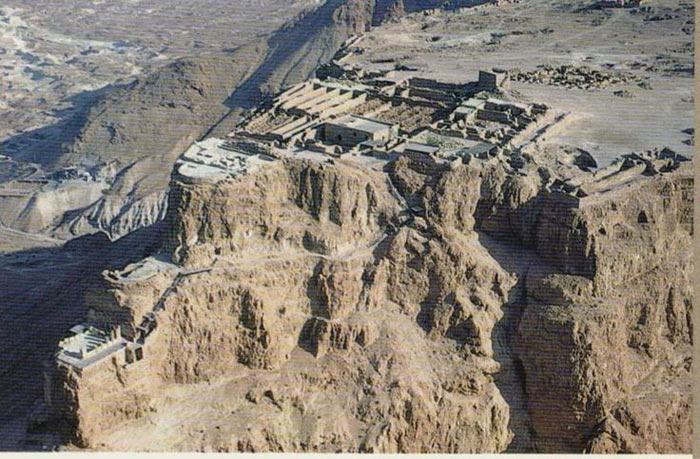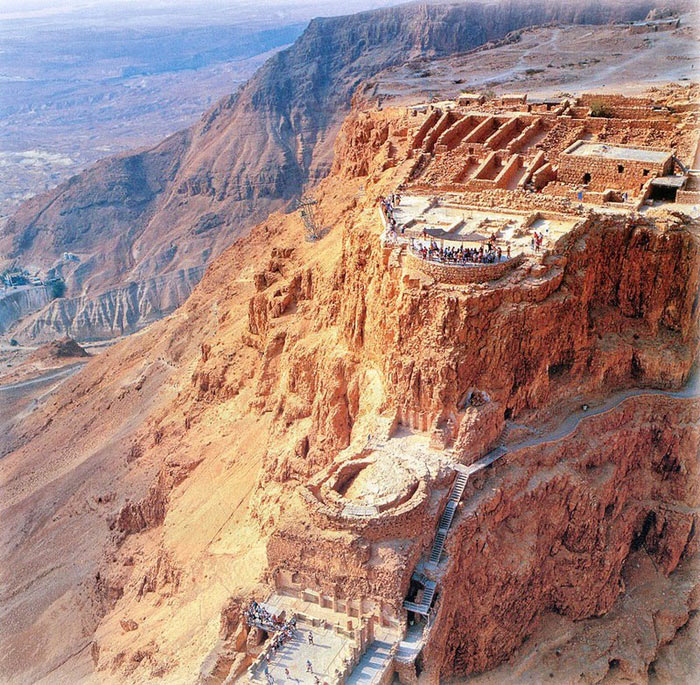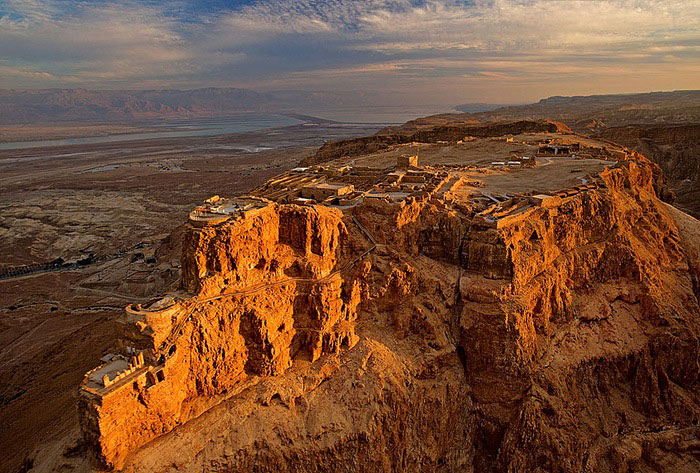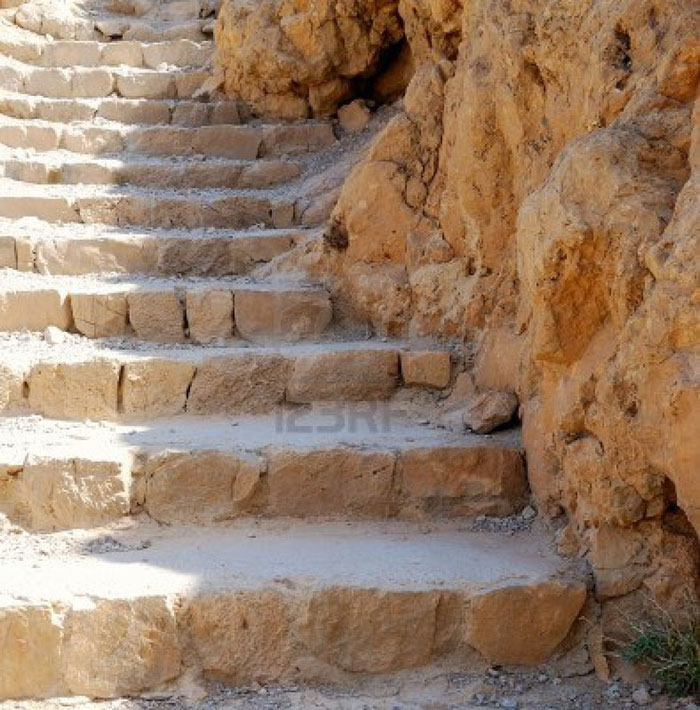Masada Fortress - World Cultural Heritage in Israel
The United Nations Science, Education and Culture Organization has recognized Israel's Masada fortress as a world cultural heritage in 2001.

Masada is originally a Jewish fortress located in Israel's territory, southwest of the Dead Sea. This fortress was mostly built during the reign of King Herod the Great , about 40 BC to 30 BC.

When newly built, Masada fortress is inviolable . Masada fortress is located on a high precipice cliff, only 3 trails to go up. In the east, the fortress of the Dead Sea is 400 meters above the sea level, the west is over 100 meters high.
 Masada fortress is built from a mountain.
Masada fortress is built from a mountain.
King Herod the Great studied very carefully before choosing this terrain to build the fortress, because standing here can see the whole scene with quite a far view, spreading to many kilometers. In fact the fortress was built from a mountain and not a fortress built on a mountain. The whole fortress consists of many works such as warehouses, stables, houses, castles . in which a number of constructions were built into stone. King Herod the Great calculated very carefully the case of the besieged castle, so he built many reserves, plus 12 tanks that could hold tens of thousands of cubic meters of rainwater.
 Trail leads to the fort
Trail leads to the fort
In the 4th century BC, after King Herod died in the century, Masada fortress was first besieged in a Jewish uprising against the occupied Roman army. Later the Jewish original Roman historian Flavius Joshphus handed down the story of borrowing the Masada fortress in the Jewish War . Specifically, during the period from 70 to 73, after the Jerusalem temple was destroyed, under the command of Flavius Silva, 973 people of the Zelot movement used the Masada fortress as a base and resisted the forces. powerful of 15,000 Roman soldiers. First General Flavius Silva built a 4-kilometer long wall surrounding the mountain to create a barrier to the outside. Then he erected 8 military camps outside the fort, but so far there are still relics left. Following that, he landed a pedestal platform up to the wall to the west of the fortress, which could easily carry many weapons into the fortress.

 Today, the fortress is an indispensable destination for international travelers
Today, the fortress is an indispensable destination for international travelers
Nearly 1000 people fought very hard against the army of up to 15,000 soldiers but in the end still could not use thin force to win the enemy so that in the end the last survivors chose suicide solutions, not surrender. Thanks to this story, Masada has become a symbol of Jewish desire for freedom.

After that fall, the Masada fortress was abandoned until 1838 when it was discovered by historians. Excavations and research mainly took place in the 1950s and 1960s.

Despite being abandoned for a long time, the fort still retains quite a lot of architectural works. Some important projects are still being renovated and preserved. Not only is a place with many cultural and historical meanings, but Masada fortress is also an indispensable destination for international tourists who specialize in traveling to the Dead Sea, Negev Desert and En Gedi oasis. .
- Fortress of Jesus at Mombasa - Kenya's world cultural heritage
- Namhansanseong Fortress - World Cultural Heritage in Korea
- Suomenlinna Fortress
- Agra Fortress - India
- Acre ancient citadel - World cultural heritage in Israel
- Tel Aviv City - World Cultural Heritage in Israel
- The road of aromatherapy and deserted Negev cities
- The ancient 'impregnable' fortress was built near the Dead Sea
- Archaeological site on Mount Camel
- Historic center of Salzburg
- UNESCO registers additional world heritage sites
- Secrets - World Cultural Heritage in China
 Suzhou classic bonsai garden - China
Suzhou classic bonsai garden - China Chau Nguyen Dynasty
Chau Nguyen Dynasty Thai Son Mountain - World Wonder
Thai Son Mountain - World Wonder Ancient villages of Shirakawa-go and Gokayama
Ancient villages of Shirakawa-go and Gokayama